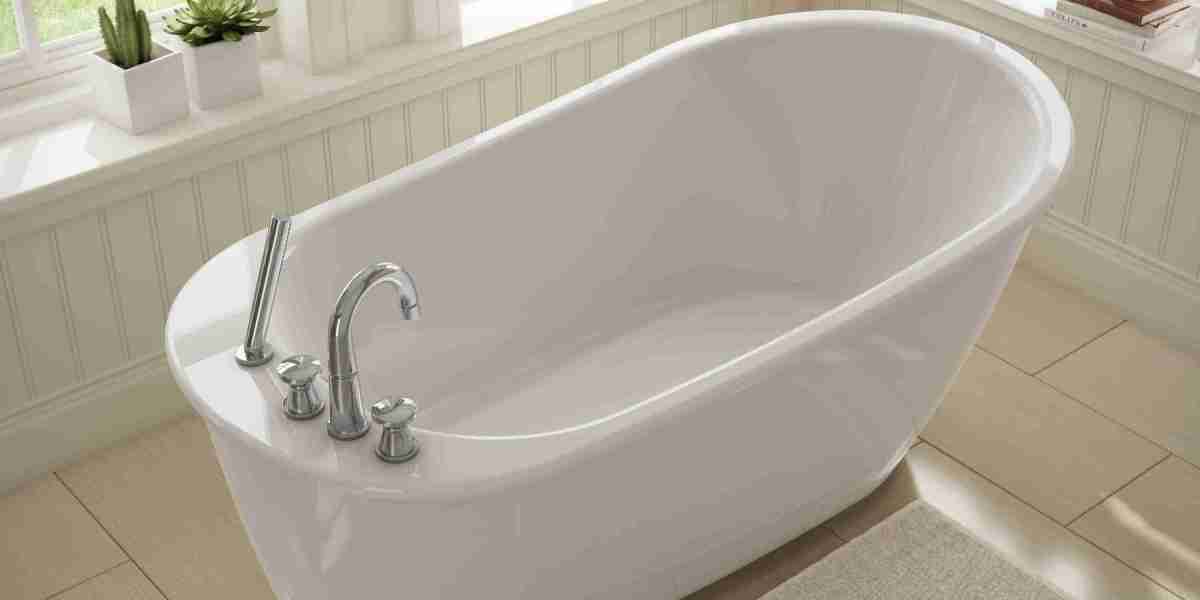The global bathtub market has been witnessing steady expansion, driven by shifting consumer lifestyles, urbanization, and increasing demand for wellness-centric home solutions. In recent years, bathtubs have evolved from basic sanitary installations to luxury wellness fixtures, integrating advanced technologies and innovative designs. This transformation has opened new avenues for manufacturers and created significant growth opportunities across both developed and emerging economies.
Current Market Landscape and Growth Outlook
As of 2023, the global bathtub market is valued at approximately USD 10.7 billion, with expectations to reach nearly USD 18.2 billion by 2032. This growth is fueled by factors such as rising disposable incomes, an increase in home renovation activities, and a growing preference for high-end bathroom fittings. North America currently holds the largest market share due to a strong housing sector and consumer inclination toward luxury upgrades. However, the Asia-Pacific region is emerging as the fastest-growing market, particularly in countries like China and India, where urbanization and middle-class expansion are prominent.
Europe continues to witness stable growth supported by demand for eco-friendly and energy-efficient solutions, while Latin America and the Middle East are seeing rising investments in modern residential infrastructure.
Key Trends Reshaping the Bathtub Market
1. Rise in Wellness and Spa-Inspired Experiences
Modern consumers are increasingly prioritizing mental and physical well-being, driving demand for bathtubs that offer spa-like features. Products equipped with hydrotherapy, chromotherapy, aromatherapy, and built-in massage jets are becoming mainstream. These wellness tubs not only offer a relaxing experience but also address health-related concerns like muscle pain and stress relief, making them especially popular among older adults and health-conscious users.
2. Integration of Smart Technologies
The concept of smart bathrooms is revolutionizing the bathtub segment. Innovations such as voice-activated controls, temperature regulation systems, app-enabled water usage tracking, and automated cleaning features are enhancing convenience and water efficiency. Smart bathtubs also cater to safety, particularly for elderly and disabled individuals, by incorporating alert systems and anti-slip technologies.
3. Sustainability and Eco-Friendly Materials
Sustainable development is influencing purchasing behavior in the bathroom fittings market. Manufacturers are increasingly using environmentally friendly materials like recycled acrylic, solid surface composites, and enamel-coated cast iron. These materials offer durability, thermal retention, and recyclability. Additionally, companies are emphasizing water-saving designs and green certifications to align with global environmental standards and appeal to eco-conscious consumers.
4. Diverse Product Designs and Configurations
Today’s market offers a wide variety of bathtub types, including freestanding, alcove, drop-in, whirlpool, walk-in, and corner tubs. Freestanding and whirlpool variants are seeing increased popularity due to their aesthetic appeal and comfort features. Walk-in bathtubs are gaining traction among seniors and individuals with mobility issues. Moreover, product customization in terms of size, shape, and color is enabling consumers to personalize their bathroom space.
5. Design-Forward Aesthetics and Functionality
Aesthetic trends play a major role in influencing consumer preferences. Minimalist designs, neutral color palettes, natural textures, and matte finishes are becoming popular. Contemporary bathroom layouts now incorporate bathtubs as focal points, especially in master bathrooms, where large-format tiles, floating vanities, and open space concepts dominate. Heated floors, backrests, LED lighting, and sound systems are also being integrated into high-end bathtub models to elevate the overall user experience.
6. Digital Sales Channels and E-commerce Growth
The rise of digitalization has expanded the bathtub market through e-commerce platforms. Online showrooms, virtual reality tools for product visualization, and digital consultations are becoming standard for buyers and designers. Many manufacturers are partnering with home improvement websites and interior design platforms to enhance visibility and streamline the buying process. The pandemic accelerated this trend, prompting companies to invest more in digital transformation.
7. Strategic Collaborations and Market Consolidation
To stay competitive and broaden their reach, companies in the bathtub industry are engaging in mergers, acquisitions, and strategic partnerships. Global players are investing in research and development to bring cutting-edge products to market while simultaneously expanding their footprint in emerging regions. Collaborations with hospitality and real estate developers are also creating new demand channels, especially in luxury housing and premium hotel projects.
Key Market Players and Competitive Dynamics
Leading companies in the global bathtub market include Kohler Co., Toto Ltd., American Bath Group, Jacuzzi Brands LLC, Villeroy & Boch, Roca Sanitario, Duravit AG, and LIXIL Corporation. These players compete based on product innovation, quality, brand reputation, and regional distribution networks. Emphasis is placed on R&D, customer experience, and sustainability to maintain competitive advantage and respond to evolving consumer demands.
Future Outlook and Opportunities
Looking ahead, the bathtub market is expected to continue its upward trajectory as consumer preferences shift further toward wellness, technology, and personalization. Compact, multifunctional designs will gain popularity in urban dwellings, while smart and energy-efficient bathtubs will become standard offerings. Aging populations worldwide will drive the demand for accessible solutions like walk-in tubs and safety-enhanced features.
Manufacturers that adapt to these changes—by focusing on product differentiation, sustainability, and digital engagement—will be well-positioned to thrive in this evolving market landscape. The future of the bathtub market lies in its ability to combine comfort, innovation, and sustainability into a seamless user experience that caters to modern lifestyles.



